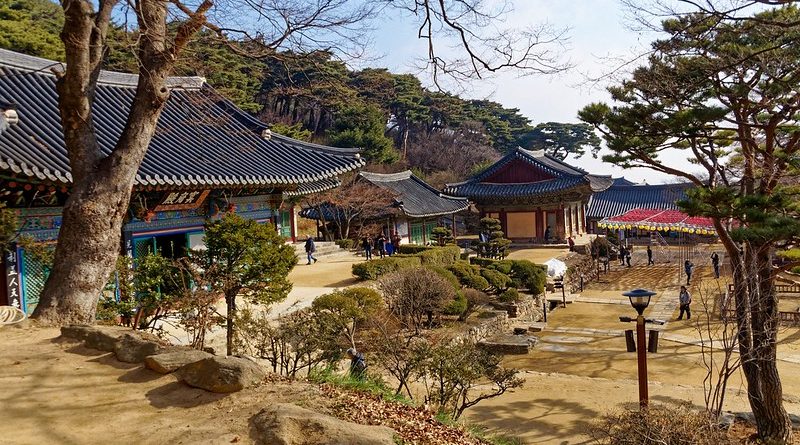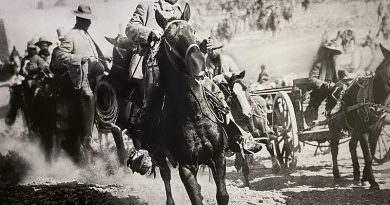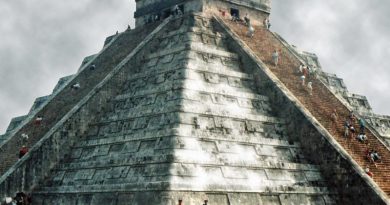A Short History of Korea
Korea’s turbulent history is little known. According to the Koreans, the first of their kin was born in 2333 BC. Less aesthetically-minded scientists believe South Korea was first inhabited around 30,000 BC, when tribes from central and northern Asia stumbled on the peninsula.
Under constant pressure from China, these tribes banded together to found a kingdom in the 1st century AD. By 700 AD the Silla Kingdom of South Korea was hitting its cultural stride, littering the country with palaces, pagodas and pleasure gardens and influencing the development of Japan’s culture.
The Silla Kingdom
For a real insight into this period head to Gyeongu .For 1000 years, up until the 10th century, Gyeongu was the capital of the Silla Dynasty. Nearly 1000 years later, Gyeongu is an open-air museum masquerading as a small, provincial town littered with ancient rubble. Those keen on Silla culture or archaeology will be in heaven, investigating the remains of temples, tombs, shrines, palaces, pleasure gardens and castles, but more ordinary folk will probably find Gyeongu only has a day’s-worth of entertainment. In the centre of town, Tumuli Park is a huge walled area with 20 royal tombs, one opened in cross section. A few hundred metres away,Ch’omsongdae looks like a pile of rocks but is actually one of the oldest observatories in East Asia. The pile of rocks is a mathematical allegory for the days and months of the year. Across the river in the south of the city you’ll find the Onung Tombs, the most ancient tomb mounds in the area, and the elegant Posokjong Bower gardens.
The crowning glory of Silla temple architecture is Pulguksa, a magnificent temple built on a series of stone terraces about 10 miles from the town. The eaves and internal painting of this gorgeous temple are one of the artistic highlights of Asia. Stand on the highest level of the temple and you’ll look down over a rolling sea of tiles. High above the temple, a seated Buddha (usually crawling with tourists) gazes over Gyeongu from Sokkuram Grotto.
Invasion
In the early 13th century the Mongols reached South Korea and gave it their usual scorched-earth treatment. When the Mongol Empire collapsed, the Choson Dynasty took over and a Korean script was developed. In 1592 Japan invaded, followed by China – the Koreans were routed and the Chinese Manchu Dynasty took over.
20th Century BluesTurning its back on the cruel, cruel world, South Korea closed its doors to outside influence until the early 20th century, when Japan annexed the peninsula. The Japanese, who hung on until the end of WWII, were harsh masters, and anti-Japanese sentiment is still strong in South Korea. After the war, the USA occupied the south of the peninsula, while the USSR took over the north. Elections to decide the fate of the country were held only in the south, and when the south declared its independence, the north invaded.
The ensuing war lasted until 1953 and by the time the war ended, two million people had died and the country had been officially divided. One in seven families was split down the middle as a result of this division.
By the time the war ended, two million people had died and the country had been officially divided with one in seven families being separated by the 38th parallel – or the DMZ (demilitarised zone).
Korea’s No Mans Land: The DMZThe region of the DMZ is 2.5 miles wide by 250 miles in length but P’anmunjom situated 40 miles north of Seoul, is the only place in the Demilitarised Zone where visits are permitted, and for any visitor to Korea it is well worth the trip. This is the truce village on which the cease-fire line was established at the end of the Korean War in 1953. It is a frightening place, where the tension still hangs in the air, and where the tense stand-off has at times erupted into violence, with death on both sides. In 1976 two American servicemen were hacked to death with axes by North Koreans and in 1983 a Russian tourist defected to the North triggering a gun battle that killed three North Koreans and one Korean soldier. It is clear that the shadow of the civil war still looms heavily over Korean life. In fact, one unusual method of earning a quick buck is to turn in a North Vietnamese spy – the government pays from $800 to $3,500 for each one you report. There is even a special hotline dedicated to catching the spies.
Visiting the DMZ
Despite sounding gruesome, the DMZ is genuinely a thrilling place to all fans of history and modern warfare. It’s also a great place to experience nature on the Eastern shore, which is a habitat for 46 species of birds including the spot-billed duck and black-tailed gull, as well as other rare species of flora and fauna like fresh water turtles, terrapins and butterflies. Even Siberian Tiger are thought to exist in the area thanks to regeneration. The region’s name “Keum-Su-Gang-San” translates as “land of embroidered rivers and mountains” and it’s a space of natural wonder as it has been left virtually untouched since the War, allowing nature to take over. Campaigns are under way to try to persuade the Northern and Southern governments to turn the region into a World Peace Park. And environmental site.
If you want to experience one of the most interesting tours that Korea has to offer, check out with your hotel for organised tours and check in for a trip of a lifetime.
RELATED LINKSKorea DMZWebsite dedicated to history, nature and tourism within the demilitarized zone.
DMZ ForumSite dedicated to campaigning to transform the zone into a World Peace Park. T into a World
South Korea Today
After a few years of semi-democracy in the South, martial law was declared in 1972. The next 15 years roller-coastered between democracy and repressive martial law, hitting a stomach-heaving low in 1980 when 200 student protesters were killed in the Kwangju massacre.
By the late 1980s the country was at flashpoint – student protests were convulsing the country and workers all over South Korea were walking off the job to join them. Among the demands were democratic elections, freedom of the press and the release of political prisoners. The government wasn’t budging and civil war looked imminent until, to everyone’s jaw-dropping surprise, President Chun suddenly decided that everything the protesters were asking for was alright by him.
Today South Korea is one of Asia’s most dynamic countries . It is one of region’s tiger economies with brands such as Samsung and Kia recognisable around the world. It has also become a major arms manufacturer.
North Korea Today
North Korea, meantime , remains cut off from the world – a Communist dictatorship ruled by the same family for the last seventy years . Heavily sanctioned by the outside world , economic crises including food shortages are common place.
The fearful regime runs a black market economy and spends vast sums developing and testing rockets, balllistic missiles and nuclear weapons and issuing bellicose threats against South Korea and its western allies, particularly the US.




